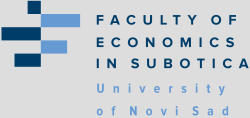Development of 21ST Century Skills as a Response to Youth Unemployment
DOI:
https://doi.org/10.46541/978-86-7233-397-8_117Keywords:
21st century skills, digital competences, labor market, youth unemployment, SerbiaAbstract
The intense development of technology and socio-economic implications of the Covid-19 pandemic caused a transfer of work activities from physical to virtual environment. Thus, the need for digital competencies development, especially among young people entering the labor market, has become particularly important. The Covid-19 pandemic resulted in a reduction in supply and demand on the labor market in numerous areas of the Serbian economy, which is not the case of the IT sector, which expanded in 2020 and achieved an export surplus. This sector also records a deficit in the number of available professionals, both in Serbia and in the EU. Employers point out the difficulties in finding suitable candidates, while young people feel that they are not sufficiently informed about the needs of the labor market. The problem of high rates of youth unemployment is directly related to economic migration, which further reduces the supply of qualified professionals in Serbian labor market. Therefore, this paper focuses on a review of previous research in the field of digital competencies needed for a competitive position in the labor market of the 21st century. The paper also examines the competencies of young people in Serbia in terms of ICT skills as well as successful practices at the EU level that are focused on reducing the deficit of digitally competent individuals. By linking the development of digital competencies of young people and reducing the unemployment rate, this paper provides a basis for further scientific research regarding the stated issue.



